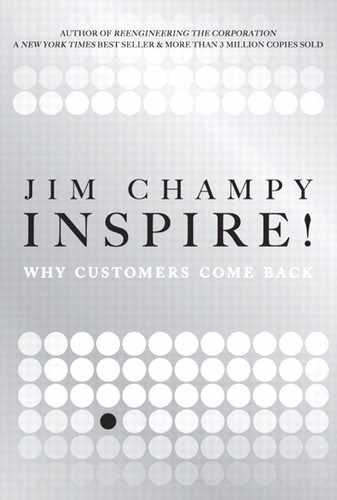Epilogue
This book described the great opportunities that lie before us and what’s possible for businesses that grasp those opportunities. But I am a realist as well as an optimist. As this manuscript goes to the publisher, a dark cloud hangs over us. People the world over fear that an extended recession has set in.
The headlines of today’s newspaper say it all: “Big and Small, Companies Cling by a Thread.” The stories describe how a local plastics company is being hit by higher materials costs while orders are falling; how a large national retail chain is closely managing its liquidity; and how a third corporation, unable to extend its financing, must do more belt-tightening in order to survive. There is even a story of how a local university has frozen hiring and stopped all construction on campus, concerned that the increasing financial needs of students will force the school to draw on its assets.
The current crisis has been created by tight credit—for banks, for businesses, and for consumers. But concerns about a recession were building even before global credit markets began to stagger. A worldwide slowdown had already begun and signs of overcapacity were showing up in many industries. As Charles Darwin would have put it, businesses have been breeding beyond the pool of available customers. I have always wondered why anyone needed three Home Depots within a 10-mile stretch of highway near my home. Now, Home Depot is asking the same question.
A global economic slowdown certainly gets leaders focused. The most immediate response is to reduce costs: shutter plants, lay off people, drive down supplier prices. But as one CEO put it during the last recession, you can’t shrink yourself to greatness. Even in challenging times, it’s important to think about innovation and growth.
The auto industry has been battered mercilessly over the past year or two, but history teaches that the industry is often inspired to new creative heights by adversity. When air-quality regulators in the United States and Japan and sky-high gasoline prices were making life miserable for automakers in the 1970s, Honda bet the bank on the low-mileage Civic and won big. Facing bankruptcy in 1979, Chrysler introduced the minivan. Sales rose dramatically, and Chrysler came back. Even now, there are signs that 2010 will be a breakthrough model year with a rash of new hybrids and all-electric vehicles. For those outfits that have built up a cache of cash, a downturn is prime time for expansion. Increased market share may come from acquiring hard-hit competitors.
Of course, not every company will be able to seize the opportunity to innovate or expand. But every organization should be reconsidering and rethinking how it operates. Even before the current economic crisis, businesses were feeling pressured by their customers to deliver more for less. This means that companies have to learn to deliver more with less—less capital, less people, less resources of all types. The ability of an organization to execute—efficiently and effectively—will be its key, not just to survival but to growth. It’s what competing in global markets demands and what technology now enables.
In good times and bad, superb execution can be a company’s distinctive competitive quality. Your business may not be able to compete by having uniquely innovative products or services (not every company can be Apple). But it can compete by having a unique operating model. As you can see from the enterprises in this book, customers come back to businesses that know how to deliver on their promise.
That’s why the next book in this series will focus on how companies achieve true operational excellence. Like Outsmart! and Inspire!, it will have a simple, direct title: Deliver! That’s because delivering is what every successful business does every day, in good times as well as bad.
